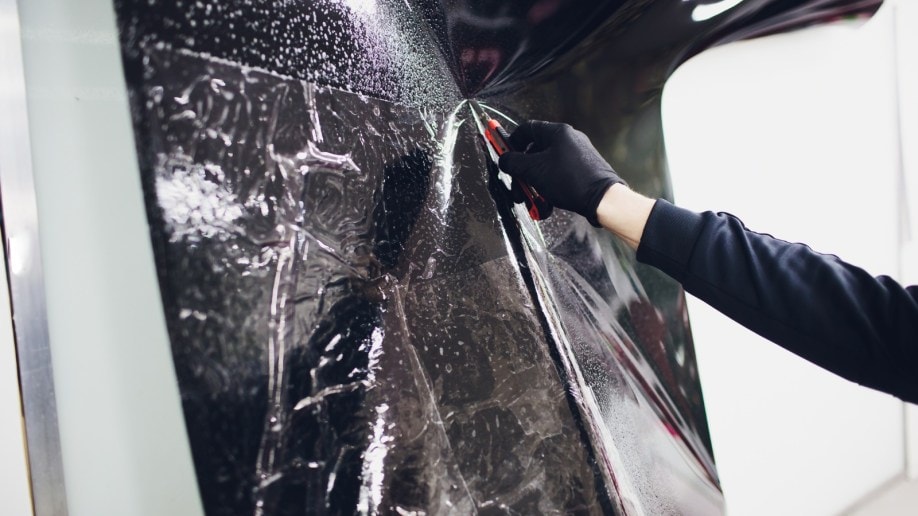Auto Window Tinting: Enhance Your Cars and truck's Style and Privacy
Home Window Tinting Rules and Standards: What You Required to Know Prior To Tinting Your Cars And Truck
Prior to proceeding with home window tinting for your vehicle, it is necessary to familiarize yourself with the diverse legislations and guidelines that govern this technique across various states. These laws determine the allowable levels of tint darkness, frequently determined by visible light transmission (VLT) portions, and include specific stipulations for front windscreens intended at guaranteeing roadway security. Furthermore, particular territories might supply clinical exceptions for individuals with qualifying problems. Recognizing these complexities can save you from possible legal ramifications, yet what are the specific guidelines in your state?
Review of Window Tinting Rules
Home window tinting legislations are frequently based on variant across different jurisdictions, reflecting regional guidelines and safety and security considerations. These legislations determine the permissible degrees of tint darkness and reflectiveness on lorry windows, guaranteeing that motorists preserve adequate presence while likewise protecting versus damaging UV rays and warmth.
Many regulations identify window tinting based on the Visible Light Transmission (VLT) percentage, which suggests the amount of light that can pass with the home window. Generally, lower VLT percents represent darker colors. Legislations commonly set apart between the front, side, and back windows, with more stringent constraints applied to the front windshield to improve safety for both the vehicle driver and other roadway customers.
Compliance with home window tinting regulations is vital, as infractions can result in fines, compulsory removal of the tint, and potential rises in insurance coverage costs. It is essential for lorry owners to familiarize themselves with regional regulations before proceeding with window tinting installations.
State-by-State Tint Regulations
Recognizing the specific home window tinting policies in each state is vital for car proprietors looking for to follow the legislation. Each state in the united state has actually developed its very own collection of regulations governing home window tinting, which can differ substantially. These regulations typically determine the allowed levels of tint darkness, the kinds of windows that can be tinted, and any kind of clinical exemptions that may apply.
For circumstances, states like California have strict constraints on color darkness for front windows, while others, such as New Mexico, may permit darker tints. In addition, particular states mandate particular visibility percents for different home windows, consisting of the windscreen, front side windows, and back windows. It is essential for vehicle proprietors to familiarize themselves with their state's laws to prevent potential fines or penalties.
Moreover, some states might require a qualification sticker label to be put on tinted windows, showing conformity with state laws. Failing to abide by these policies not only runs the risk of legal repercussions but can also impact safety and security and presence while driving. Automobile owners should perform detailed research study or seek advice from local authorities to make certain full understanding and conformity with state-by-state tint policies.
Allowed Color Levels and Kinds
Lots of vehicle owners might be surprised to find out that allowed tint levels and kinds vary extensively throughout different states. Each state has actually established its very own laws regarding the allowable darkness and reflectivity of home window color, frequently gauged by Visible Light Transmission (VLT) portions. VLT refers to the amount of light that can travel through the colored windows; hence, a reduced percentage indicates a darker tint.

Additionally, the types of color products allowed can vary, with some states restricting metal or mirror-like surfaces. It is necessary for vehicle owners to familiarize themselves with their state's specific legislations to guarantee compliance. Non-compliance can result in fines, necessary elimination of the tint, or various other lawful consequences, making it critical to comprehend these laws prior to Get the facts waging installment.
Medical Exemptions for Tinting
While not all states provide allowances for clinical exemptions concerning home window tinting, those that do identify the need for particular people to boost presence and comfort because of medical conditions. Various clinical problems, such as lupus, skin cancer cells, and certain eye problems, can provide people particularly delicate to sunshine. These individuals might call for darker colors to protect themselves from harmful UV rays and glow.

It is essential to keep in mind that despite a medical exemption, there might still be constraints on the level of color permitted. Compliance with state laws guarantees that people are both protected and within lawful restrictions. Those thinking about clinical exceptions ought to call their neighborhood Department of Motor Cars or comparable authority to recognize the treatments and needs required to use for an exemption efficiently.
Fines for Non-Compliance
Falling short to adhere to window tinting regulations can result in significant fines, which vary by state. Police are encouraged to issue citations for automobiles that do not adhere to the defined tinting policies. These penalties typically include fines, which can range from modest quantities to numerous hundred bucks, relying on the intensity of the violation and the state in question.
In some jurisdictions, repeated offenses might lead to rising fines or additional penalties, such as required court looks. Non-compliance may require the removal of unlawful tinting, often at the owner's cost. In extreme instances, regular wrongdoers may encounter suspension of their lorry enrollment till conformity is attained.
Additionally, insurance policy ramifications may develop from receiving numerous citations for window tint offenses. Insurance providers may watch such infractions as an indicator of riskier actions, possibly bring about increased premiums or problem in coverage.
To prevent these fines, it is critical for car proprietors to acquaint themselves with their local home window tinting regulations and guarantee that their automobile complies (Window Tinting). This aggressive technique not just avoids legal ramifications yet likewise promotes address road security
Conclusion

The majority of guidelines classify window tinting based on the Visible Light Transmission (VLT) percent, which indicates the quantity of light that can pass via the window. Compliance with window tinting policies is critical, as violations can result in penalties, mandatory removal of the tint, and potential boosts in insurance policy costs.Understanding the particular home window tinting policies in each state is essential for car proprietors seeking to comply with the law. These regulations frequently determine the permitted levels of tint darkness, the kinds of home windows that can be tinted, and any type of clinical exemptions that may use.
For circumstances, you can try this out states like California have rigid limitations on tint darkness for front windows, while others, such as New Mexico, may allow darker colors.